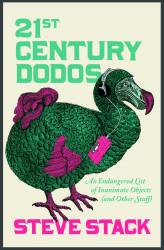
Today I have a guest post from Vanessa Gebbie, who is currently on a blog tour for the paperback edition of her debut novel, The Coward’s Tale. It’s an exploration of the web of stories surrounding a Welsh town still affected by a mining disaster from years earlier. I was really struck by the sense of place in the novel, and asked Vanessa if she’d say a few words about the real-life places that inspired her. And so, without further ado, I’ll hand you over to Vanessa.
***
Thank you for saying you enjoyed the sense of place in The Coward’s Tale, David. It is (as the note at the back suggests) based on a real enough place – Twynyrodyn – part of the town of Merthyr Tydfil in south Wales, where my family came from, and where I spent a lot of time as a child. Every setting was real. Whether it still is, in reality, is almost irrelevant – it was real enough once.
In addition, I was writing the book for my late father, and it was giving him great pleasure to know I was using all those places he had told me so much about – places he used to court my mother – the walks on the hills, the bridge over the river.
Every house is based on one I knew very well. Maerdy Street is Highland View, where my paternal grandmother lived. The coal tip at the end of the street is where I used to play as a child. Judah Jones’s park is where I would be taken by my aunt. Gwilym Terrace is where my maternal grandmother’s house still stands, although she is long gone (she is ‘Black Skirted Nan’…)- the alleyways, the back gardens, the yard with their dripping outside taps, the kitchens… all solid in my memory.
I would go for picnics to the hills with the stream where Peter Edwards finds his bone-stone, and walk with my uncle to the disused railway tunnel (although I moved it to be closer in to the town.) My mother Gwladys Morgan was an assistant librarian in Merthyr Public Library. My aunt Nancy Evans was Deputy Head at one of the town’s schools. My paternal grandfather Rees Rees worked on the railway. My maternal grandfather was Morgan Morgan -Morgan Ddu – he is in the novel somewhere.
I made up a lot too… and enjoyed wandering the town that grew out of those few streets very much! I wanted it to be known that this was Merthyr. But also wanted anyone who wondered what had happened to this street or that building to know I‘d played with it – the power of fiction.
But I don’t think I’d have loved writing the fictitious place so much if I hadn’t loved the real place first.
***
Thanks very much, Vanessa! In closing, I’ll point you towards Steve Wasseman’s excellent Read Me Something You Love blog, where you can hear Vanessa reading ‘The Ledge’ by Lawrence Sargent Hall. And The Coward’s Tale blog tour continues tomorrow over at Chelsey Flood’s blog.

Recent Comments